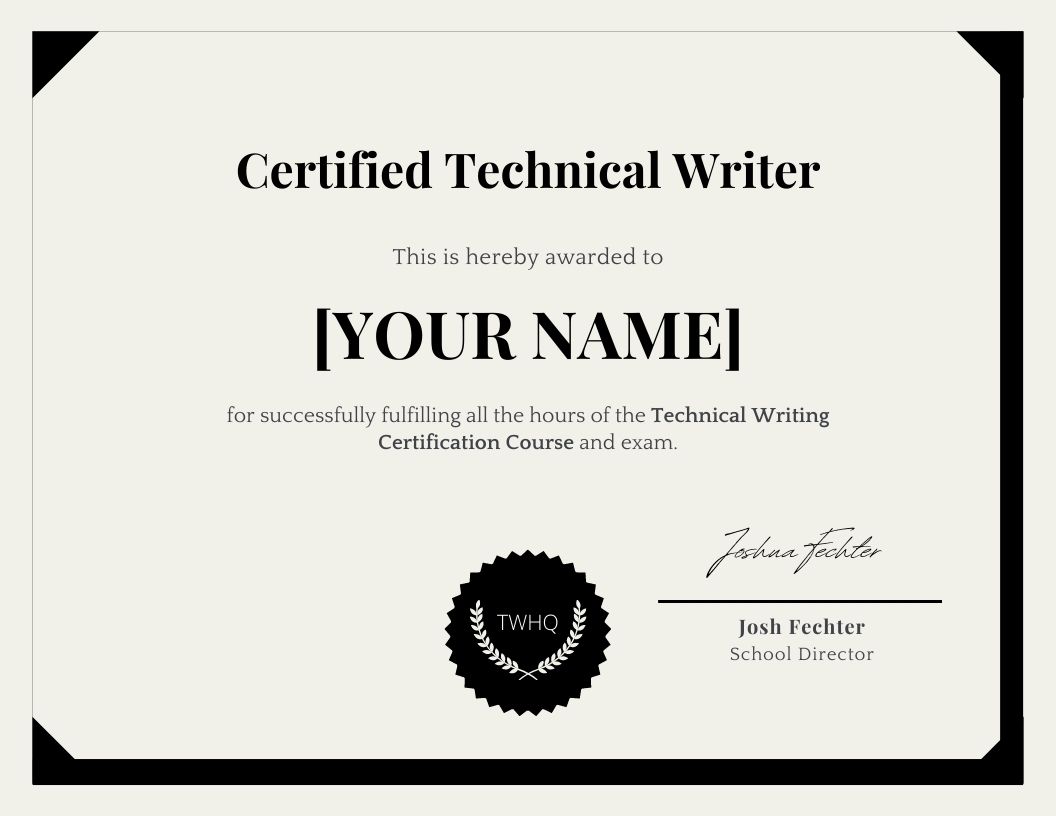Technical documentation requires years of experience and expertise on the subject matter, especially if you’re working in complex fields like industrial, medical, computer science, and other similar industries. That’s why you need to follow good documentation practices.
There’s a difference between best practices for technical writing and good documentation practices. Understanding that difference as a technical writer is crucial because it will help you develop better technical documentation.
In any case, keep in mind that you need to understand good documentation practices to further your technical writing career. If you’re interested in learning more via video, then watch the video below. Otherwise, skip ahead.
In this article, we’ll discuss good documentation and best practices and the factors of good documentation practices in 2026.
Let’s dive right in.
What are Good Documentation Practices (GDocP)?
Good documentation practices, otherwise known as GDocP, are an industry-recognized standard for creating, maintaining, and developing technical documentation.
You can’t put it under the general best practices of technical documentation because it is a specific method of developing documentation. It follows a very specific list of standards that need to be followed by whoever’s developing the documentation. It’s widely used in the pharmaceutical industry and the medical devices industry.
When you’re publishing documentation, you need to follow the GDocP checklist requirements to meet the industry standards. Otherwise, your technical documentation will not be approved and official.
Document control is crucial in this process to ensure compliance with GDocP standards and regulatory requirements. Audit trails are essential for maintaining compliance and traceability.
The pharmaceutical and medical device industry already has good manufacturing practices (GMP). That’s mostly because of the Current Good Manufacturing Practice (CGMP) regulations that are enforced by the FDA (Food and Drug Administration).
Additional regulations include the 21 CFR Part 11, which regulates electronic data, electronic signatures and electronic records (ESER), and CAPA (Corrective and Preventive Actions).
Similarly, you’ll find that there is also Good Clinical Practice (GCP) and Good Laboratory Practice (GLP).
All four of them, including Good Documentation Practice, Good Clinical Practice, Good Manufacturing Practice, and Good Laboratory Practice, fall under the concept of GxP in pharmaceuticals. GxP is officially a collection of federal regulations and quality guidelines to ensure healthcare products are safe.
Some quality management systems also include Good Storage Practice (GSP) and Good Review Practice (GRP) in the mix.
Along with the GxP quality control concept, a regulatory agency also includes standard operating procedures (SOPs) for the organizations.
To maintain a good record, audit trails, be attributable, and complete regulatory requirements, it’s essential to have good documentation practice. To become an expert at good documentation practices, check out our technical writing certification course.
6 Principles of Good Documentation Practices as of 2026
The initial good documentation practice was based on ALCOA – it’s now abbreviated into the acronym ALOCA-C. They stand for:
- Attributable
- Legible
- Original
- Contemporaneous
- Accurate
- Complete
Each aspect covers the fundamentals of technical documentation in the healthcare industry. They should be covered when you’re developing your computer systems, record-keeping systems, logbooks, and more.
It’s crucial to follow these six principles to maintain batch records and clinical trial records in adherence to ISO standards, increase traceability, improve data entry systems, make healthcare issuance easier, and research and develop laboratory notebooks, among other things.
Effective data collection is essential in maintaining accurate and reliable records, ensuring compliance with GMP guidelines, and meeting regulatory expectations.
In any case, here’s what each of the six good documentation practices entails.
Attributable
The first principle states that all documentation should be immediately and readily identifiable and attributable. This means recording data at the exact moment an activity occurs, ensuring you can immediately see who created, recorded, and developed it.
Data entry techniques are crucial in the quality management system, ensuring accurate and timely data recording.
Furthermore, it also includes any precautions that have been taken against the potential risks of forgery and/or falsification of those details.
Legible
The second principle is mostly about having great technical writing skills and abilities. That means you should have a strong command of sentence structure, tone, grammar, and format.
Therefore, all the stored documentation needs to be completely legible and easy to understand. Maintaining legible logbooks is crucial for accurate record-keeping. The more decipherable and unobscured it is, the better.
The idea is to develop documentation for the common person. As a result, anyone who decides to read up on the documentation can easily understand all aspects of it to the point where they can relay the information forward.
Original
It’s absolutely crucial to maintain the originality of your documentation. That means you should always have original copies of your documentation in your computer systems.
It helps improve your confidentiality and guarantees the accuracy of the documentation. Maintaining original laboratory notebooks is essential for accurate and reliable records of clinical trials.
That doesn’t mean you can’t develop and use photocopies. You can still make as many photocopies and printouts as you want, but you always need to have the original in your system.
Contemporaneous
For any sort of technical documentation, it’s crucial that it has contemporaneous information. All the documentation should demonstrate contemporaneous record-keeping.
That means that all the relevant documents need to be accurately dated and time-stamped when they’re created, developed, published, and updated.
As a result, you’ll have the entire history of the document design, development, testing, production, and decision-making process at your disposal. It makes all the relevant information regarding end products completely traceable.
Therefore, it would be easier to audit the document, update it, and more. Additionally, incorporating data analysis ensures the accuracy and timeliness of records, which is essential for maintaining data integrity and complying with regulatory expectations.
Accurate for Regulatory Compliance
Maintaining data integrity is one of the most critical aspects of technical documentation. All the processes and procedures that go into the recording, development, and storing of the documentation need to be straightforward, accurate, and precise.
They have to be designed to ensure and maximize accuracy and reliability. Usually, there are second-person checks to see if the original data used is accurate. It’s especially needed when there is a lot of raw data that needs validation.
In any case, you have to develop all your processes to maintain data integrity, maximize data reliability, and maximize the retention period. Adhering to data integrity requirements is crucial to ensure that all data remains accurate and reliable over time.
Complete
Lastly, the final principle is to note down the entirety of your process and documentation. That means your maintenance and storage of all the required documentation should be complete and top-notch, covering the entirety of your process.
Ensuring compliance with data integrity requirements is crucial in achieving this completeness.
To do that, you need to pay extra attention to data integrity. Maintaining complete electronic data records is essential to ensure that all information is accurate and readily available. For that, you have to keep the following points in mind.
- The data in the documentation can and must not be altered, modified, or erased once it is entered or recorded. If, in any case, you need to make any changes or delete the data, you need to get the appropriate permissions from the stakeholders.
- Every single part of the document should be secured, protected, and stored in backup data systems. It’s best to have cloud-based systems so you can access the document at any time. More importantly, you have to make sure the documentation is secure from any unwarranted access attempts.
- There’s also a need for a well-designed system for keeping a check on the login system. There shouldn’t be any shared passwords or share data system logins to avoid any issues. Furthermore, signature forging shouldn’t be possible, especially because of the FDA’s ESER regulations.
In any case, all your technical documentation should be absolutely complete, including the data, procedures, and backups, according to good documentation practices.
Good Documentation Practices and Document Control Requirements

Now that you have a good idea of the principles of good documentation practices, you can look into the requirements. Generally, the requirements may change depending on the industry and may require custom calibration in some cases. However, the requirements remain mostly the same.
Implementing a document management system is crucial to support these documentation requirements, automate syntax and spell-checking, and demonstrate adherence to quality standards set by diverse international regulatory bodies in the pharmaceutical and medtech sectors.
Here are the parts of GDocP that are applicable in all cases.
Documentation Creation
All information recorded during documentation creation should be absolutely accurate and legible. It should also be timely; that means it should be up to date with any recent updates and occasions. Most importantly, all the data used during documentation creation should be verified from all fronts.
Documentation Review Cycles
Every document that is part of the technical documentation should be reviewed multiple times by various stakeholders. They need documents to be individually verified and signed by authorized personnel. If there’s an issue, the document is to be rewritten so it can go through the review cycles again.
Documentation Maintenance
Every technical documentation needs to be maintained to stay relevant. To do that, you have to regularly review the document to make sure it’s still relevant. If it’s not, you have to update it to make sure it’s up to date. Most importantly, the updated version needs to be backed up appropriately.
Documentation Modifications
You need to keep a record of and maintain all the audit trails, including the reasons for modifications. Furthermore, the documentation needs to have administrative controls of the modification process and the reasons behind the modifications.
Administrative controls are essential to ensure that all changes are properly authorized and documented, maintaining the integrity and accuracy of the documentation.
Understanding and adhering to good documentation practices not only ensure you’re doing everything according to regulations but also helps you keep track of everything and do it right.
Ensuring regulatory compliance is essential in maintaining the accuracy and timeliness of documentation, including data integrity assurances and meeting industry standards and legal responsibilities.
The Role of Technology in Good Documentation Practices
Technology plays a crucial role in enhancing good documentation practices. Here are some ways technology is shaping documentation processes:
Automation and AI
Automation tools and AI-powered systems can streamline the documentation process. These technologies can automate repetitive tasks, such as syntax and spell checking, formatting, and even generating initial drafts of documents. AI can also assist in ensuring compliance by automatically checking documents against regulatory requirements.
Cloud-Based Document Management
Cloud-based document management systems provide a centralized platform for storing, accessing, and managing documentation. These systems ensure that documents are secure, backed up, and accessible from anywhere, facilitating collaboration and ensuring that the most current versions of documents are always available.
Blockchain for Data Integrity
Blockchain technology offers a way to ensure data integrity and traceability. By recording document changes on a blockchain, organizations can maintain an immutable record of all modifications, ensuring that documents are not tampered with and providing a clear audit trail.
Digital Signatures and Electronic Records
Digital signatures and electronic records are becoming standard in regulated industries. They provide a secure and efficient way to sign and verify documents, ensuring authenticity and compliance with regulations such as 21 CFR Part 11.
Data Analytics for Continuous Improvement
Data analytics tools can be used to monitor and analyze documentation processes. By identifying patterns and trends, organizations can continuously improve their documentation practices, ensuring compliance and enhancing efficiency.
Training and Certification for Good Documentation Practices
Ongoing training and certification are essential to ensure that technical writers and documentation specialists are proficient in good documentation practices. Here are some steps to consider:
Enroll in Certification Programs
Certification programs, such as those offered by regulatory bodies and industry associations, provide comprehensive training on good documentation practices. These programs cover the principles of GDocP, regulatory requirements, and best practices for documentation.
Attend Workshops and Seminars
Workshops and seminars offer opportunities for hands-on learning and networking with industry experts. These events can provide valuable insights into the latest trends and technologies in documentation practices.
Continuous Professional Development
Staying updated with the latest developments in documentation practices is crucial. Technical writers should regularly participate in professional development activities, such as online courses, webinars, and industry conferences.
Using Good Documentation Practices and Electronic Records in 2026
Nowadays, if you make a mistake in the documentation, you would directly receive a single-line warning letter, and then you will face a penalty. Continuous improvement initiatives play a crucial role in enhancing documentation practices, ensuring that errors are minimized and compliance is maintained.
These initiatives are essential for maintaining compliance by continuously updating and refining documentation processes.
Good documentation practices help protect you from all forms of unforeseen issues. They protect your organization, personnel, and your users. Most importantly, they help you stay compliant with state and federal laws and regulations.
These practices are essential not only in the pharmaceutical sector but also in the medical device industries, where the FDA’s guidelines are strictly followed.
Using good documentation processes will reduce your compliance risk, improve data backups, and make it easy to develop technical documentation for your organization. Mix that up with some great documentation formatting examples, and you’ll end up with excellent documentation.
However, relying on paper documentation can be inefficient and inadequate, as it tends to become outdated and unmanageable, failing to meet modern demands for control and efficiency.
Make sure you have a good idea about the basic principles of good documentation practices and their requirements. If you use technical documentation best practices along with good documentation practices, you’ll be developing the ideal documentation for your company and product.
Conclusion
Good documentation practices are vital for creating accurate, reliable, and compliant technical documentation, especially in complex industries like pharmaceuticals, medical devices, and healthcare. By adhering to principles such as Attributable, Legible, Original, Contemporaneous, Accurate, and Complete (ALCOA-C), technical writers can ensure their documentation meets regulatory standards and maintains data integrity.
Leveraging technology, ongoing training, and certification further enhances documentation quality. Understanding and implementing these practices not only protect organizations from compliance issues but also improve overall documentation efficiency and reliability.
FAQs
Here are the most frequently asked questions about good documentation practices:
What is the ALCOA-C acronym in Good Documentation Practices?
ALCOA-C stands for Attributable, Legible, Original, Contemporaneous, Accurate, and Complete. These six principles are the foundation of Good Documentation Practices, ensuring that all documentation is reliable, traceable, and compliant with regulatory standards.
What are Good Documentation Practices (GDocP)?
Good Documentation Practices (GDocP) refer to industry-recognized standards for creating, maintaining, and developing technical documentation. These practices ensure that documentation is accurate, complete, and compliant with regulatory requirements, particularly in industries like pharmaceuticals and medical devices.
How do Good Documentation Practices differ from best practices in technical writing?
Good Documentation Practices (GDocP) are specific standards that must be followed to comply with industry regulations, whereas best practices in technical writing are general guidelines to improve the quality and readability of documentation.
GDocP focuses on regulatory compliance, accuracy, and traceability, while best practices emphasize clarity, structure, and audience engagement.
Why are Good Documentation Practices important?
Good Documentation Practices are crucial for ensuring that technical documentation meets regulatory standards, maintains data integrity, and provides a reliable audit trail. They help protect organizations from compliance issues, enhance the quality of documentation, and ensure the safety and efficacy of products, especially in regulated industries.
What industries primarily use Good Documentation Practices?
Good Documentation Practices are widely used in the pharmaceutical, medical device, and healthcare industries. They are also applicable in other regulated fields where accurate and reliable documentation is critical for compliance and quality assurance.
If you are new to technical writing and are looking to break in, we recommend taking our Technical Writing Certification Course, where you will learn the fundamentals of being a technical writer, how to dominate technical writer interviews, and how to stand out as a technical writing candidate.





















